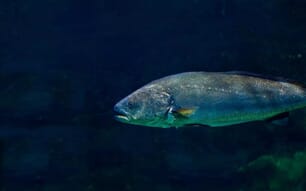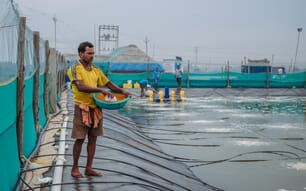A recently published NIFES study describes what is believed to be the optimal nutritional composition of feed for wrasse: 65 per cent protein, 12 per cent fat and 16 per cent carbohydrates.
The research team also found that the wrasse used in aquaculture were not being fed sufficient amounts of certain micronutrients such as taurine, calcium, phosphorus and vitamins, A, D and K.
“We found that the needs of farmed wrasse for most of the important nutrients were being satisfied. Our next task will be to find out just how much the wrasse need of minerals and vitamins, for example,” says NIFES research scientist Kristin Hamre.
The scientists based their conclusions on an experiment in which they varied the protein, fat and carbohydrate content of feed they gave to wrasse fry, and then measured their rates of survival and growth.
They also gave farmed fry a feed that is used in commercial wrasse aquaculture. The nutrient content of the fry themselves was analysed and compared with data obtained from wild ballan wrasse.
Additionally, the scientists analysed the nutrient content of the roe of sexually mature fish. This procedure enabled them to find out whether the famed fish were being given inadequate or excessive amounts of a number of nutrients (based on the hypothesis that wild fish enjoy good nutritional status).
The raising of wrasse for use in sea-cages is still limited in scale, and most of these fish are still caught in the open sea. However, increased resistance to the medicines used to combat sea-lice makes it more and more difficult for fish-farms to keep the sea-lice at an acceptable level. Therefore the demand for wrasse is increasing, causing concern about overfishing. This has led to a growing desire to employ farmed wrasse. The hope is that farmed ballan wrasse can become an environmentally friendly alternative to medication, because this approach would eliminate the release of drug residues to the environment in the vicinity of fish-farms.
“Ballan wrasse is a new species for aquaculture, so we still have to overcome a number of fish-health and environmental challenges before we can produce them on a large scale. With this analysis of their nutritional requirements we have taken a major step forward,” says Hamre.
The study was carried out in collaboration with Nofima and Marine Harvest, and was financed by the Research Council of Norway , the Fishery and Aquaculture Industry Research Fund (FHF), Marine Harvest and Villa Organic AS.



